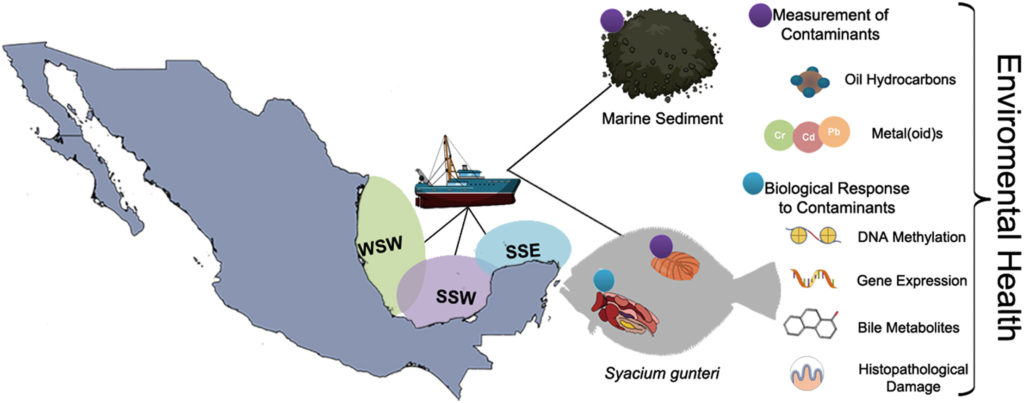Mercedes Quintanilla-Mena, Gerardo Gold-Bouchot, Omar Zapata-Pérez, Jorge Rubio-Piña, Adriana Quiroz-Moreno Víctor Manuel Vidal-Martínez, Ma. Leopoldina Aguirre-Macedo, Carlos Puch-Hau
https://doi.org/10.1016/j.envpol.2019.113669
Abstract
The Gulf of Mexico (GoM) is exposed to a diversity of contaminants, such as hydrocarbons and heavy metal(oid)s, either from natural sources or as a result of uncontrolled coastal urbanisation and industrialisation. To determine the effect of these contaminants on the marine biota along the Mexican GoM, the biological responses of the shoal flounder Syacium gunteri, naturally exposed, were studied. The study area included all the Mexican GoM, which was divided into three areas: West-southwest (WSW), South-southwest (SSW) and South-southeast (SSE). The biological responses included the global DNA methylation levels, the expression of biomarker genes related to contaminants (cytochrome P450 1A, glutathione S-transferase, glutathione reductase, glutathione peroxidase, catalase, and vitellogenin), histopathological lesions and PAH metabolites in bile (hydroxynaphthalene, hydroxyphenanthrene, hydroxypyrene and Benzo[a]pyrene). The correlation between the biological responses and the concentration of contaminants (hydrocarbons and metal(oid)s), present in both sediments and organisms, were studied. The shoal flounders in WSW and SSW areas presented higher DNA hypomethylation, less antioxidative response and biotransformation gene expression and a higher concentration of PAH metabolites in bile than SSE area; those responses were associated with total hydrocarbons and metals such as chromium (Cr). SSE biological responses were mainly associated with the presence of metals, such as cadmium (Cd) and copper (Cu), in the tissue of shoal flounders. The results obtained on the physiological response of the shoal flounder can be used as part of a permanent active environmental surveillance program to watch the ecosystem health of the Mexican GoM.



Comentarios recientes